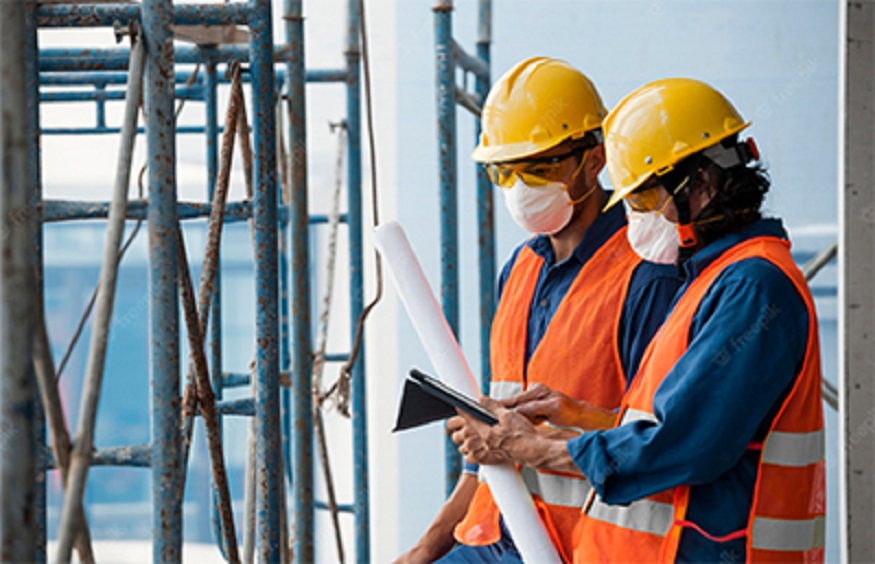Ensuring safety in work environments involving heights is a responsibility that is assigned to personnel in leadership roles. This is commonplace in industries where technicians are required to oversee physical installations, such as telecommunications, construction, oil & gas, etc. Thus, technicians – and in some cases, engineers – that want to advance their careers will ideally need certification that they are familiar with aspects such as the relevant safety equipment, preventive and protective control measures, workplace safety and health guidelines (WSH), etc.
The Manage Work at Height course equips individuals with these essential skills to oversee and implement safety measures that align with both regulatory standards and best practices in the industry. Let’s explore how this course prepares professionals for leadership roles in safety and why it is essential for anyone involved in managing work at heights.
Understanding WSH Work at Height Regulations
The Workplace Safety and Health (WSH) Work at Height Regulations play a pivotal role in governing the safety of workers operating at elevated levels. These regulations mandate that workplaces implement preventive and protective control measures to minimize the risk of falls. Senior team members responsible for overseeing such environments must be well-versed in these regulations, which is where the Managing WAH course proves invaluable.
This course aligns with WSH legislation, ensuring that individuals are trained in compliance with health, safety, and legislative standards. Participants learn how to implement a system of fall preventive and protective control measures, including individual fall protection equipment, and how to respond to a fall or a similar emergency.
Becoming a Work at Height Supervisor
The role of a supervisor is crucial in ensuring that all safety measures are adhered to, particularly in high-risk environments like those involving work at height. WAH supervisor courses that are industry-recognized, such as the Work at Height Supervisor Course by Eversafe, focus specifically on developing the competencies needed for supervisors to manage such operations.
Supervisors are responsible for ensuring that all safety protocols are in place, including verifying that workers have undergone the necessary heights and safety training. This is why a major focus of the WAH Supervisor Course is on training leaders about how to implement a system of safety that addresses the unique risks posed by working at heights.
The WAH Supervisor Course also prepares individuals on how to review control measures for safe execution, ensuring that all tasks are performed with the highest level of safety. They are also able to identify common errors that workers make with fall protection equipment and respond appropriately before lives are endangered. Thus, this certification comes with the additional benefit of convincing potential employers that you are fully capable of being entrusted with this key responsibility.
Effective Leadership Through Practical Knowledge
The Manage WAH Course builds practical leadership skills by providing participants with hands-on training in fall preventive and protective control measures. In addition to global best practices regarding workplace safety and health, participants learn how to properly plan, oversee, and adjust work-at-height tasks in a practical setting, which is key for such certification.
Furthermore, the course provides guidance on the use of individual fall protection equipment and teaches participants how to train workers to properly don, check, and correct their equipment. This ensures that safety equipment is used correctly, reducing the likelihood of accidents, and can immediately ensure successful participants acquire leadership and training roles in a project.
Integrating Safety into the Workplace Culture
Another critical aspect of the Managing Work at Height course is its emphasis on creating a culture of safety within the workplace. Leaders are trained not only to enforce safety measures but also to instill an attitude of continuous improvement through effective monitoring and control.
This includes learning how to:
- Regularly review the necessary fall prevention plans and updating them where required
- Ensure that all team members are familiar with fall emergency response plans
- Hold regular training sessions on height safety training and individual fall protection equipment
This focus on cultivating a proactive safety culture ensures that workers at height are better protected, and accidents are less likely to occur. To employers in the related industries, potential hires with such skills are seen as highly valuable due to the pivotal role that a competent safety supervisor can play in any project.
Work At Heights (WAH) Supervisor Courses At NTUC LearningHub
Whether your career sees you working in such conditions often, or you want to obtain certification to highlight that you have the skills to prepare for and respond to a high-pressure situation like a fall emergency, a WAH Supervisor course can be of immense benefit.
NTUC LearningHub can help you take your career to new heights with a well-recognised, industry-certified working at heights course. Eligible for applicants that possess certification equivalent to or above WSQ ESS Workplace Literacy and Numeracy Level 4 to carry out hazards identification, risk assessment, and risk control measures, the Manage Work At Height course will equip you with the knowledge you need and the certification to prove it. Contact NTUC LearningHub and secure your future today.




